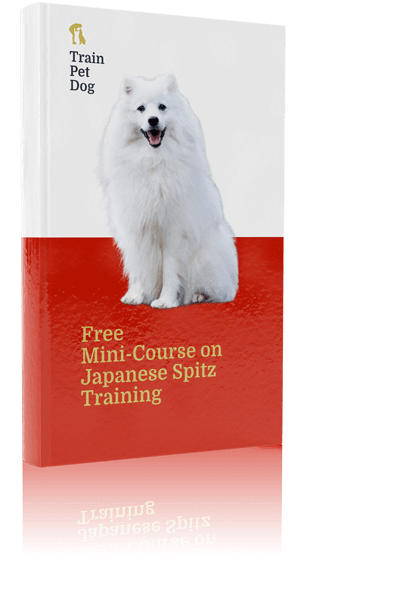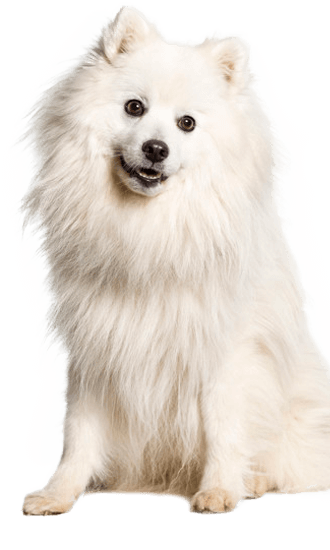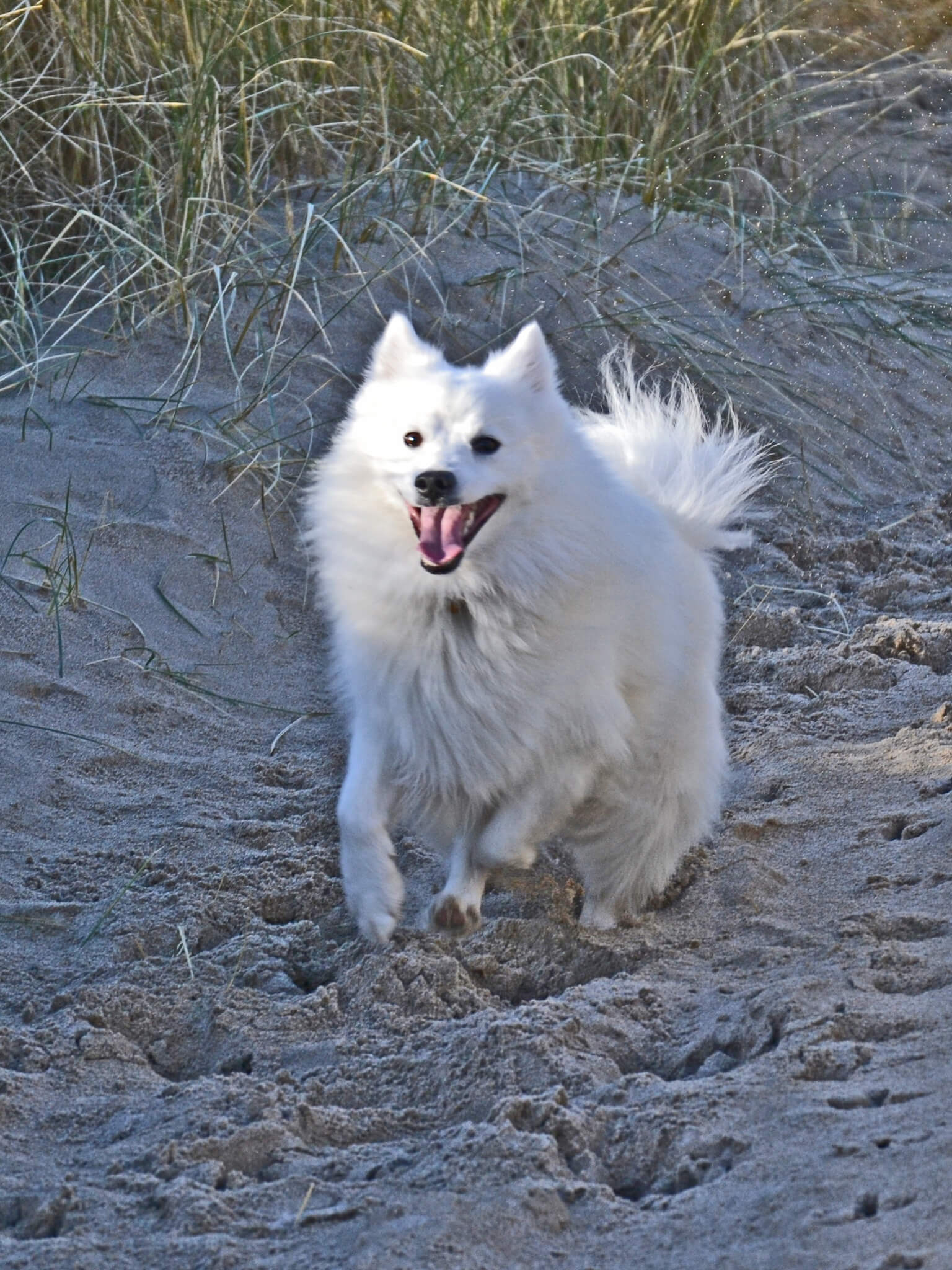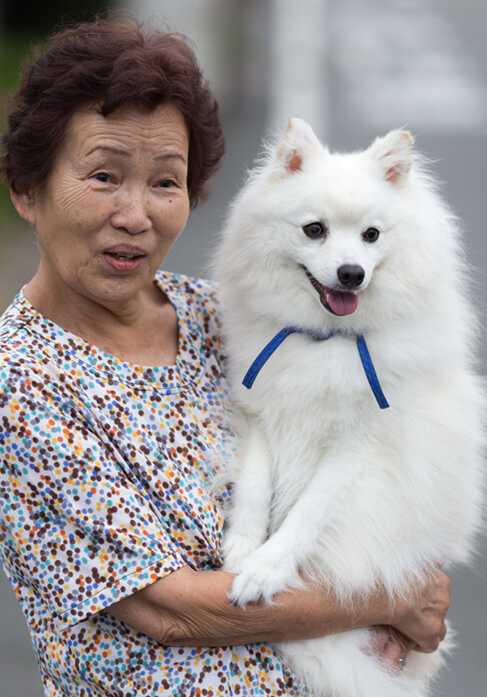Privacy Policy: Your email address is 100% safe.
We don't spam and hate it as much as you do :-) You can also unsubscribe from our mailing list at any time.

Sign Up
Japanese Spitz: Characteristics, Exercise, Health

Country of Origin, History of Japanese Spitzs
The Japanese Spitz is said to have its ancestors traced back to the Siberian Samoyed. The Japanese Spitz was first introduced in Japan via Siberia and Manchurian. Later in the middle of the 20th century, the breed gained its popularity. The first dog show exhibition of the Japanese Spitz took place in 1921.
Japanese Spitz Tools
Breed Selector Tool - is the Japanese Spitz the right breed for you?
Is the Japanese Spitz the right breed for you and your family?
Find out by using our Free Dog Breed Selector Tool
Check Your Japanese Spitz's Learning Style
Are you aware dogs also have a learning style that can greatly affect their ability to housetrain as well as be trained correctly. Evaluate your Japanese Spitz's learning style and personality using our free Learning Style tool so that you are better able to provide him with the proper Japanese Spitz training methods.
Is your Japanese Spitz dominating over you?
Does your Japanese Spitz bark unnecessarily? Does your Japanese Spitz come to you when you call? Download a FREE Report on Dog Dominance for you and your Japanese Spitz and learn how to control your dog.
Do you make these mistakes with your Japanese Spitz?
Are you inadvertently snow-balling bad behavior in your Japanese Spitz? Evaluate your Dog Training Style from our Free Tool and learn how best to deal with your dog.
Japanese Spitz Calorie Calculator
Do you know how many calories your Japanese Spitz needs every day and how many cups of food you should be giving it every day? Click here to use our Japanese Spitz Calorie Calculator.

Description
The Japanese Spitz is a small, compact, long-haired dog with thick under-layer coat that is soft, short and dense. Although similar to American Eskimo, Russian Spitz and German Spitz, the coat color of the Japanese Spitz is always white.
Basically, the Japanese Spits is a compact dog, with a well-arched back and a offstanding coat. The dog has large oval eyes, small triangular ears that are pointed straight, a thick head with a muzzle that is a bit narrow and a hairy tail that tend to curl on the top.
Height: 12 to 15 inches
Weight: Between 11 to 20 pounds



Free Japanese Spitz Training Secrets
Free Course on Japanese Spitz Training & Obedience
Stop All Bad Behavior, Excessive Barking and Biting
Japanese Spitz Personality Traits

Temperament of the Dog
The Japanese Spitz makes great companion dog. is affectionate, lively, energetic, loyal, intelligent, agile and active by nature. Although they are always eager to please their owners, they are not easy to train. They tend to ask for a lot of attention and love from their human families. Many a times their stubborn and somewhat temperamental personality acts as a hindrance to proper training. They don't mix well with strangers. Socializing and obedience training is important and should be started from an early age.
The Japanese Spitz is not suitable for families having infants. Too much of attention from children tend to make them snappy. Their alertness makes them good watchdogs.
Japanese Spitz Activity Level
Exercise Need
Regular walks are welcome. You can also take the dog for a running session occasionally to help it stretch its legs and keep its active mind busy. The Japanese Spitz does not require a lot of exercise, what it needs is a lot of human attention and love. The dog will be content if you take it for a walk with you or just sit at home spend idle time at home.
Living Conditions
The Japanese Spitz is quite comfortable living indoors and playing in the nearby park. They make ideal pets for city dwellers, apartment living and those with people living in homes with a small fenced backyard.
Grooming
Grooming involves regular brushing or combing with soft bristled comb or brush to avoid matting. Baths should be given only when needed. During the shedding season, a double-teethed comb should be used to remove the loose hairs.


Free Japanese Spitz Training Secrets
Free Course on Japanese Spitz Training & Obedience
Stop All Bad Behavior, Excessive Barking and Biting
Health and Care
The Japanese Spitz may suffer from hereditary health disorders like patella luxation or eye problems like runny eyes owing to dirt or allergy. They may also suffer from tooth related ailments. Otherwise, they are a healthy breed.
National Breed Clubs
Life Expectancy: Approximately between 12 years
Group: Toy Group
AKC Popularity Ranking: Foundation Stock Service
Also Known As: Nihon Supittsu
Train Your Japanese Spitz To Listen To You
Get Instant Access to Your Training Now - For Free
Sign up for our Free Japanese Spitz Mini Course to have a housebroken, obedient dog that happily comes to you every time you call.
You'll learn new commands to obedience-train your dog as well as how to housebreak your dog in 6 days or less.
You'll also learn how to eliminate bad habits like barking, nipping or biting, jumping, or pulling on the leash.Here's just s small fraction of what else you'll learn in the course:
How to lead and think like a pack dog - the new psychology.
3 dangerous mistakes that most Spitz owners make when they are trying to potty train their dogs.
The 2 main reasons why your dog barks excessively and how to control its excessive barking.
How to obedience train your Japanese Spitz to permanently end behavioral problems like Jumping, Aggression, Pulling on Leash.
A surprisingly easy way to teach your dog cool new tricks.
How to improve your dog's lifespan and keep it from getting overly heavy with a healthy and nutritious diet.
Getting Pro help fast - how to get access to our expert trainers when you need them most.
One hidden psychological trigger that all Japanese Spitzs have... that practically allows you to "analyze" and "control" your dog's every action.
Priority access to the free online seminars conducted by our training experts.
Whereas other dog training related web sites and books offer generic information for dogs in general, ours is the ONLY web site that offers Spitz information specifically, from a renowned panel of experts - because as you probably know, Spitzs have their own special training requirements that other dogs don't have.
Our Dog Experts
The Japanese Spitz training information you will read here was developed by a panel of renowned dog training experts whose combined wisdom represents nearly 100 years of specialist experience training dogs.
Here are a few of our experts:




